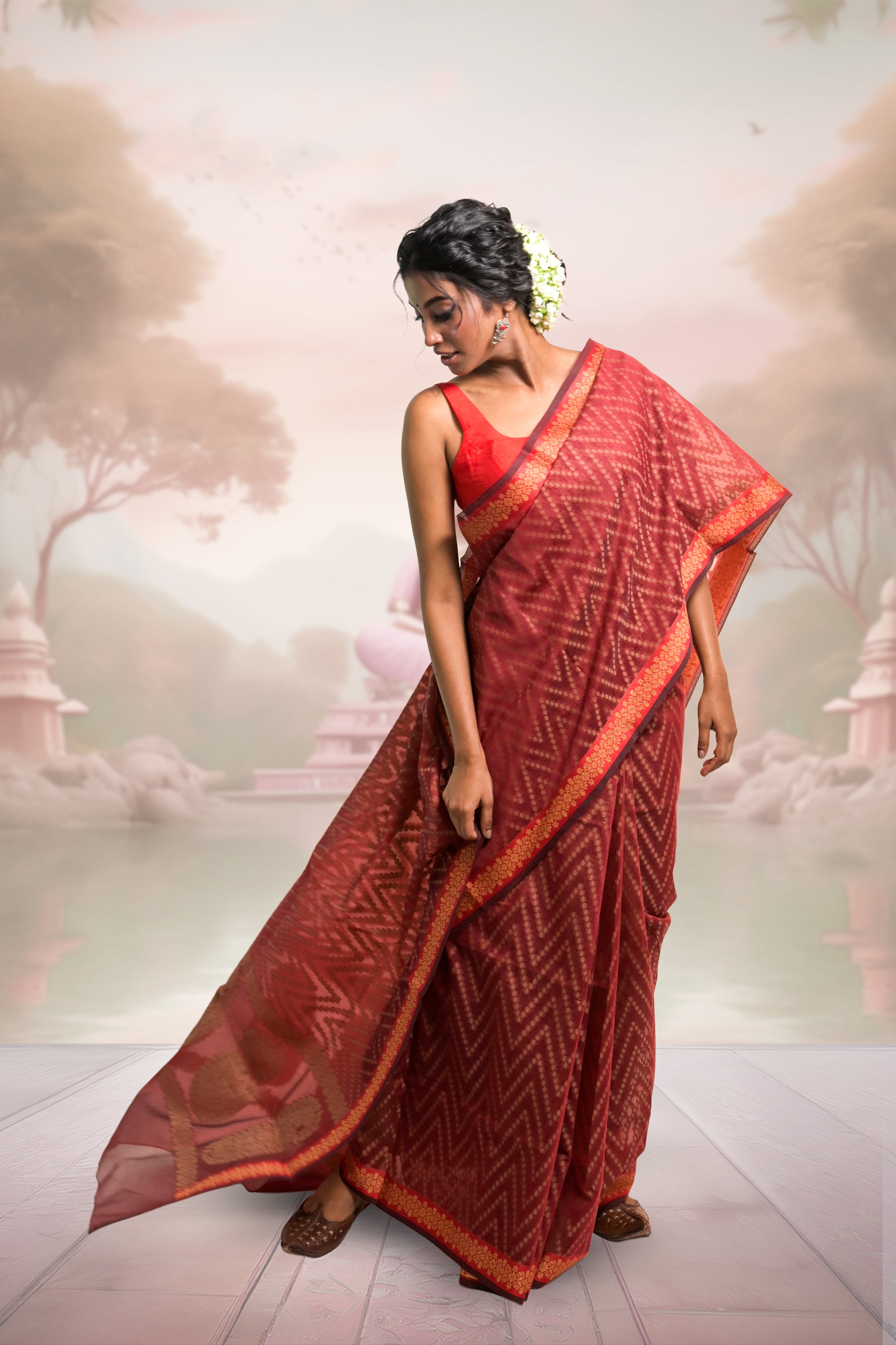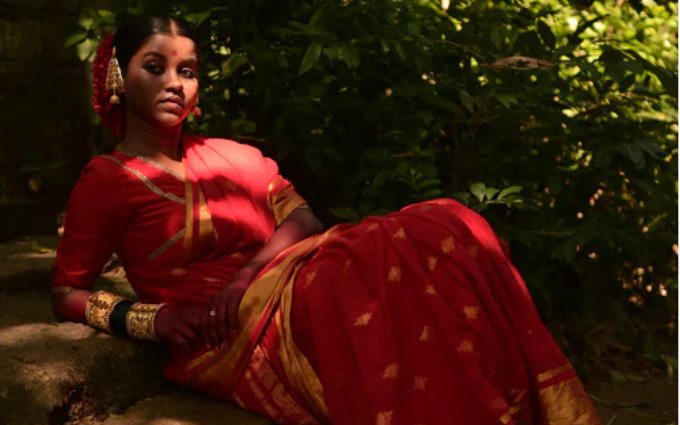
Banarasi Brocade: An Eternal Symbol of India’s Textile Legacy
The Banarasi brocade holds a place of pride in the Indian textile traditions. From the ancient city of Varanasi, the Banarasi brocade with its regal fabric, intricate motifs, and enticing appeal, represents centuries of traditions and cultural appeal.
Since the royal courts to the modern day weddings, Banarasi fabric has remained a timeless treasure and flourishes even in today's modern fashion world.
Origins of Banarasi Brocade
Dating back to more than 2000 years ago, the Banarasi textile history is talked of in the ancient scriptures and literary sources. The luxurious silks and brocades of Varanasi handloom were considered prized possessions in royal households.
The Banarasi brocade saw its golden age during Emperor Akhbar’s Mughal rule. The infusion of the Persian designs with Indian motifs, formed the iconic ornate patterns such as the floral vines, creepers, and the timeless paisley design. With this blend of cultures, the Banarasi weaving became a priceless element of the Indian textile history.
Traditional Handloom Weaving Techniques
The Varanasi handloom tradition is the heart of Banarasi brocade. The timeless Banarasi brocade are products of generation-old art and creating this masterpiece is a painstaking process that involves patience and creativity.
-
Working on pit looms or jacquard looms where the warp and weft threads are adjusted carefully and the weaving of the gold and silver zari threads to form the intricate pattern, makes the process even more complicated.
-
The designs are drawn on graph paper and then transferred into punch cards which then ensures that each motif is weaved with careful detailing.
-
Depending on the intricacy, the process of supplementary weft weaving, while inserting metallic threads to create raised and shimmering patterns may take weeks or even months to complete.
-
The banarasi fabric has variants such as the Katan (pure silk), Kora (organza), Georgette, and Shattir, with variations of Jangla, Jamdani, and Tissue weaving.
Cultural and Symbolic Significance of Banarasi Brocade
Banarasi brocade is more than just a luxurious piece of textile. It has a strong cultural connotation and has been an immemorial constituent of the Indian traditions and festivities.
-
Banarasi saree is believed to be an indispensable part of every Indian bridal trousseau. The shimmering zari work symbolises prosperity, fertility and good luck. In many communities, a Banarasi saree is passed down as a prized heirloom.
-
It is believed that Varanasi, the capital of spirituality in India, imparts its sanctity to the fabric. Due to this the Banarasi fabric worn at festivals and rituals is connected to divine blessings.
-
Historically, the Banarasi brocades were patronised by the royalty and nobility. Themes like lotus, peacocks, and flower vine even to the present day are symbolic of grandeur, beauty and spiritual allusions.
The cultural value of Banarasi weaving represents spiritual and cultural heritage, continuity, and identity.
Shop The Look!
Banarasi Brocade - The Timeless Trend
Let’s check out why despite the changing fashion trends, the Banarasi brocade remains relevant across generations.
-
The labor and skill involved in making the handwoven Banarasi brocade, makes it a luxury piece that transcends time.
-
The versatility of the Banarasi fabric, traditionally used in sarees, has helped it blend with today’s fashion trend and is used in dupattas, lehengas, sherwanis, gowns, and other modern fusion wear, making it more desirable.
-
Designers have successfully revived the Banarasi weaving by experimenting with lighter fabrics, modern colors, and gilded silhouettes. Yet, the essence of the craft remains unchanged.
-
Investing in a Banarasi brocade, one supports the community of artisans and in contrast to the mass produced textiles, the Banarasi handloom fabric is eco-friendly and promotes slow-fashion. Owning a Banarasi brocade is like owning a piece of heritage.
-
On special moments such as weddings, festivals, or milestones, a Banarasi saree or dupatta is an emotional connection that makes it eternal.
Conclusion
The Banarasi brocade is history, heritage, and human artistry woven together. From the looms of Varanasi to the modern day fashion studios, the banarasi brocade holds its essence.
The Banarasi textile, infused with Mughal influences and conserved till today by generations of artisans. In the current day scenario, the Banarasi fabric is all about sustainability and supporting the skilled weavers that have kept this tradition alive.
The Banarasi weaving reflects an emotion, a cultural heritage and shines on as India’s timeless artistry.












